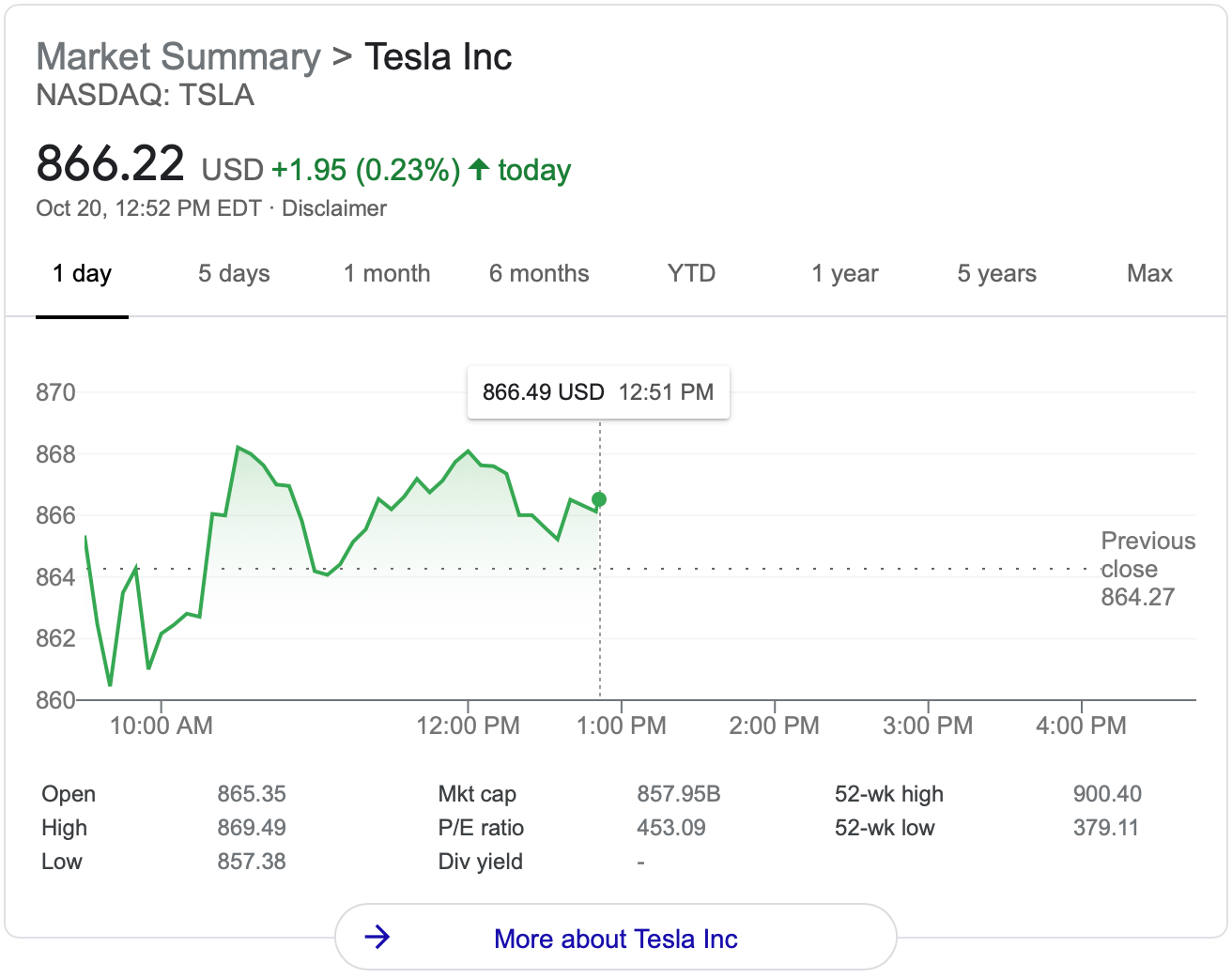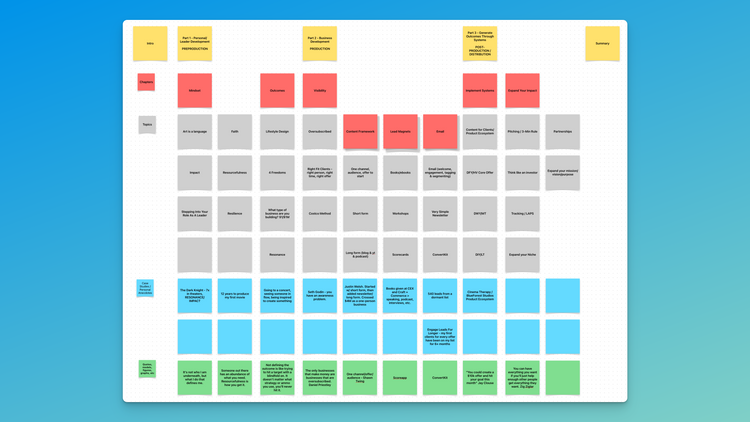7 Principles Of Marketing For Creators

My assumption is that this section on marketing and audience building is going to be the most read - and most impactful - section of the whole book.
The reason is that understanding and applying proven marketing principles and frameworks have changed my business.
In this chapter, I'm going to outline some of the most important principles for you, and in the rest of this section, we'll dive deeper into how to apply those principles in your business to get you the results you want.
Specifically: more fans, more followers, more subscribers, and more clients and customers.
Here are the most important marketing principles for creators, in no particular order.
Marketing Is Required
A business with no marketing is a business without sales.
One of the most important mindset shifts you can make in this area is to take responsibility for the marketing of your business as the business owner.
No one else is going to market your business for you - without paying them, at least.
If no one knows your business exists, if they don't know that you made a new piece of art or released a new song or created a new video, how on earth do you expect anyone to buy it?
Whether it's email marketing, word of mouth, social media, content, or any other type of marketing (we'll get into the different options later in the book), marketing is required for you to go from a five-figure creator to a six-figure business owner.
Marketing Isn't Selling
Too many creators shy away from marketing because they don't want to be too "sales-y" with their audience.
But, and this is important, marketing is NOT the same as selling.
The two are completely different parts of your business. While they should work together to create the desired outcome, as any functioning system should, they are not the same.
Marketing is about getting more awareness. It's how people discover that you exist and decide whether they ultimately want to do business with you - or follow you, subscribe to your content, etc.
Sales are about conversion. It's how you turn someone who knows about your business into a customer.
Selling is an event. Marketing is a process.
Marketing Isn't Advertising
Marketing is how you tell your story to pull the right people into your world and serve them, whether as a subscriber, follower, or client, or customer.
Advertising is the vehicle used to get your marketing message in front of an audience of people.
Again, like sales, marketing and advertising should work hand in hand. We'll talk more about systems later in the book.
But they are not the same.
Marketing is the story you want to tell. Advertising is the way to get that story in front of people using paid channels.
For our purposes, we'll refer to advertising as any paid method of getting in front of your audience, using ads or similar paid channels.
Marketing, on the other hand, is free. You can publish content on social media, YouTube, a newsletter, or numerous other places without spending any money at all.
Tesla, notoriously, doesn't spend money on ads, and yet they have grown to become the world's most valuable carmaker.

If they can grow to an over $850 billion market cap and billions a year in sales with no advertising, you can certainly reach six figures in your business.
To Do Marketing Well You Need To Understand Your Audience
Effective marketing is not a "spray and pray" process. Instead, effective marketing means delivering value to a specific audience that helps them in some way.
When you market a video production company to an audience of product makers who need videos for their business, you are providing value. You're making it easier for them to promote their products using your services.
When you share your music online and tell people about the song, how it will make them feel, how they may connect with the lyrics, you're helping people have an experience that they wouldn't have otherwise.
All this leads to this principle:
It's much easier to market to someone who is already looking for what you have than to try and convince someone that they need what you make.
We'll use this principle throughout this section as a foundation to build on. Spending time trying to convince people is expensive and time-consuming, and rarely leads to the desired outcome of a new client or customer.
A quick story:
In 2015 and 2016 I spent months, easily over 100 hours of my time, trying to raise money for a feature film.
The approach I took was to connect with, or "market to", venture capital firms here in Utah.
It was easy enough to find a directory of dozens of firms with lots of money, so I went through and found the emails of people who worked at the different firms and sent cold emails - a form of outbound marketing.
Hundreds of emails led to dozens of responses and a handful of in-person meetings where I could share the "marketing message" of the investment opportunity.
Yet, meeting after meeting ended with the same response:
"This sounds amazing, and you pitched the project well, but we simply can't invest."
Wait, what? Why not?
Turns out that venture capital firms have a very strict box that contains the types of things they can invest in.
And none of the boxes at any of these firms contained "feature films".
As good as the investment was, and no matter how well I pitched it, there was simply no convincing these firms to invest because they were bound through their agreements to only invest in specific industries.
All that wasted time could have been avoided if I knew this one thing going in.
It's easier to market to people who are already looking for what you have than to try and convince someone to work with you.
Funnily enough, the money we did end up raising came from someone who emailed us about the project because they had heard about our project and wanted to learn more.
We'll go into much more detail about the importance and process of understanding your audience later in this section.
Marketing Is Easy When It Is Connected To Your Purpose
Early in 2021, I kept seeing everyone on Twitter join in this 30-day challenge to write every day for 30 days. The #Ship30for30 hashtag was all over my feed.
I looked at the program and decided I didn't need to spend $400 or whatever the price was to write every day for 30 days and publish it as a screenshot.
So I decided to just do it myself! I started writing every day about finance and even had some good results from it:
This question gets asked a LOT - what should I charge for my creative work?
— Daren | Craftsman Creative 💡 (@darentsmith) June 5, 2021
Here's my answer in today's atomic essay: pic.twitter.com/WGxBvR40QA
Yet, after 11 days I stopped writing.
The reason is that I hadn't connected this content marketing effort to my bigger purpose with Craftsman Creative.
Compare that to this book, which I'm writing the first drafts of and sharing in public multiple times a week.
Why is it so hard to go from a five-figure creator to a six-figure business owner?
— Daren | Craftsman Creative 💡 (@darentsmith) August 25, 2021
That question is why I'm writing a new book...
And I'm writing it in public!
You can follow along, contribute and give feedback at https://t.co/zDwFppmEIF#tweet100
I've consistently shown up, day after day, working on the book and publishing new chapters.
The reason this time is so much easier is that the book connects so easily and clearly to the greater purpose and vision I have for my business.
The book helps me reach new people, welcome more people into the world of Craftsman Creative, and create the platform - the "minimum viable audience" - for future success.
When everything is in alignment with a bigger purpose and vision everything becomes not only easier but clearer to the audience of how it all fits together. It feels more like a complete thought than a random set of marketing messages every day.
Marketing is Service. It's Contribution.
When you shift your thinking from marketing being "salesy" and gross to it being a service to the people you hope to serve one day as clients, everything changes.
The words you use. The stories you tell. The frequency and timing and the way that you put those messages in front of people.
People don't get turned off. They get pulled in.
That said, marketing is just as much about pulling the right people in as it is about clearly keeping the "wrong" people out.
I knew I had succeeded at this with the subtitle for this book, which is a type of marketing message.
"Helping five-figure creators build six-figure businesses"
This book isn't for people who are making a million a year with their business grow it to $10 million. It's not for startups that are trying to scale and grow to an exit. It's not for investors who want to better understand the creator economy.
Could those people benefit from the principles in this book? Probably. But if they were to purchase the book in hopes of getting their needs met, they would likely be disappointed and leave a 1-star review.
Your marketing is a promise.
A promise that says that those who engage with this thing you made will get something valuable.
In this case, the five-figure (and even one-, two-, three-, and four-figure) creators who read this book will learn how to create six-figure businesses. That's the promise that I'm delivering through this book.
That clarity helps people who aren't looking for that value to not purchase, as much as it helps those who are to make the decision that much easier.
Clarity helps your audience, those who aren't your audience, and you as the marketer.
There isn't one right way to market to your audience.
The last principle in this chapter is that the goal here is not to discover the one objectively correct way to market to your audience.
Perfect doesn't exist.
Marketing is a process, one that evolves over time the more you analyze and improve it. You'll experiment with different things. Some will work, some won't.
Do more of what works and less of what doesn't, and you can't help but get better at marketing.
If you see it as a series of experiments rather than a search for the holy grail, you'll make the process much easier on yourself.
There is, however, one principle that will help you discover the things that work much faster.
Get permission first.
Seth Godin's book Permission Marketing was a game-changer when it was first published. It was during the time when marketers were ruining the internet with all sorts of cheap and interrupting messages because clicks were cheap and the internet was the wild wild west.
Anything goes, so to speak.
But Seth's permission marketing framework has stood the test of time.
Getting permission from people before you begin marketing to them ensures that only the people who want to be marketed to receive those messages.
Everyone else can keep getting value from you without ever feeling marketed to.
It's a beautiful approach that carries the utmost respect for your audience.
More on permission marketing later, but important for now to consider what this principle would look like for your marketing and the way you treat your audience.
In the rest of this section, we'll cover many other principles that will, hopefully, shift your mindset and help you succeed at marketing.
Principles that treat your audience with respect, give them incredible amounts of value and help you grow your audience in ways that you haven't been able to before, providing you with an incredible platform for future success.
NEXT CHAPTER >

< PREVIOUS CHAPTER








Member discussion